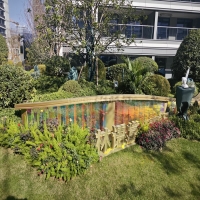Welcome to the website for landscape facilities products and knowledge.
How do manufacturers address the challenge of maintaining structural integrity in high-wind areas?
Manufacturers face significant challenges when designing structures for high-wind areas, where powerful gusts and storms can compromise safety and durability. To address these challenges, they employ a combination of advanced materials, innovative engineering, and rigorous testing.
One key strategy is the use of wind-resistant materials such as reinforced concrete, steel frames, and impact-resistant glass. These materials are selected for their ability to withstand high wind loads and debris impact. Additionally, aerodynamic design principles are applied to reduce wind pressure on buildings, including tapered shapes, rounded edges, and strategic openings that allow wind to pass through with minimal resistance.
Structural reinforcement is another critical factor. Cross-bracing, shear walls, and deep foundations are commonly used to enhance stability. Manufacturers also conduct wind tunnel testing and computer simulations to predict how structures will perform under extreme conditions, allowing for adjustments before construction begins.
Finally, adherence to strict building codes and standards ensures that structures in high-wind areas meet safety requirements. By integrating these approaches, manufacturers can create buildings that remain resilient even in the face of severe weather.
Related search:

Recommendation
Metal and acrylic color-changing combined curtain wall for large-scale public landscape facilities